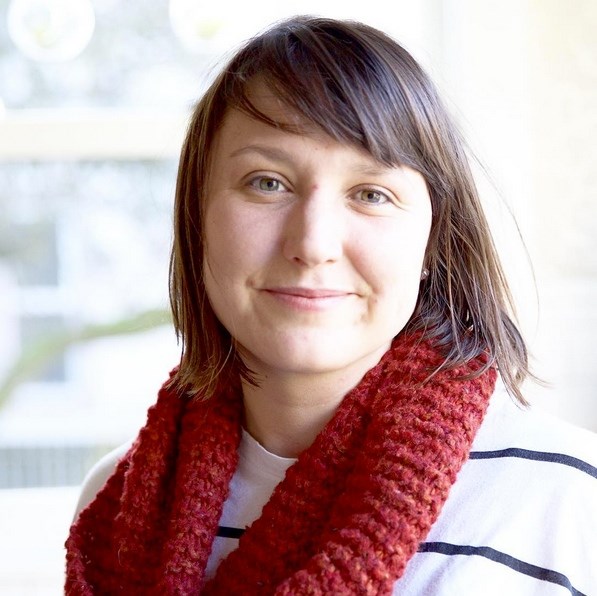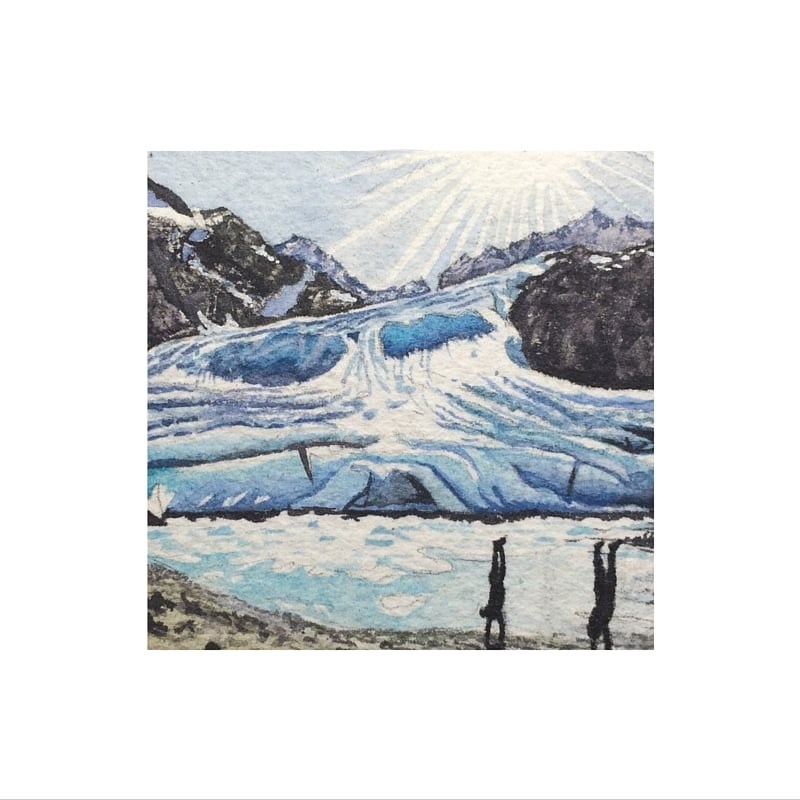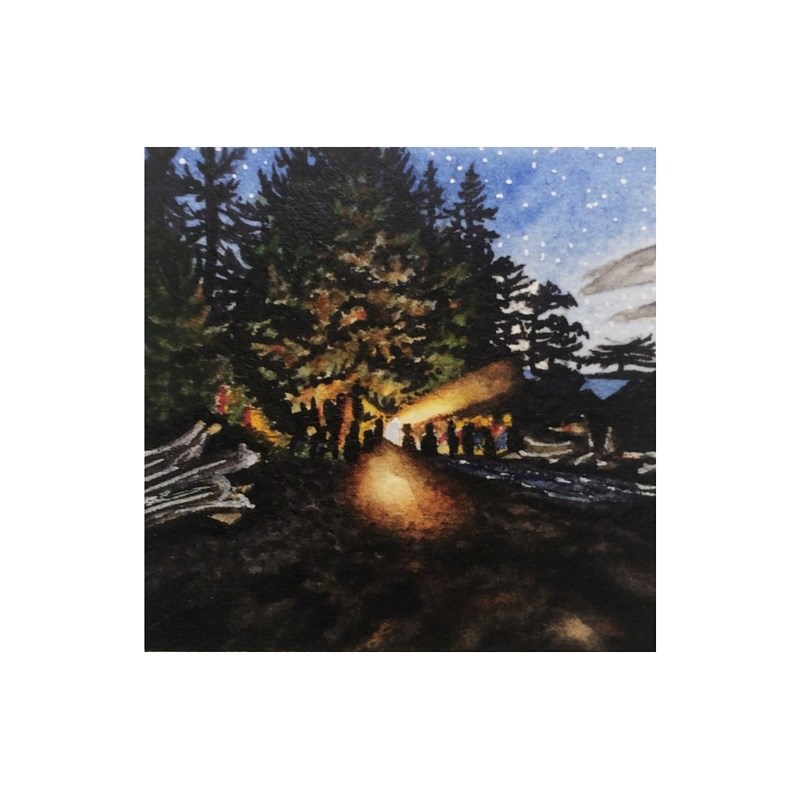When Vancouver artist Marisa Pahl wanted to get back to her personal painting practice, she didn’t just pick up her watercolour brushes and start aimlessly inking. Instead, Pahl challenged herself to do 100 paintings in 100 days, based on photos taken by environmental advocates.
Paintings for the project, entitled This Wild Road, are being publicly auctioned off on Instagram each week, with 50 per cent of the proceeds going to the BC-based environmental organization Pacific Wild. The paintings, done in Instagram's instantly recognizable square format, will be exhibited together later this year before going to their buyers.
Pahl kick-started the project on Jan. 1 by inviting a slew of eco-minded locals to submit their photos and stories, and describe one small action they do to help the environment. Now, with a month of momentum under her canvas, she’s opening it up to the public to participate.
We caught up with Pahl by phone in her studio to learn more about the ambitious project. The interview has been edited for brevity and clarity.

KK: Why do a painting every day?
MP: I’ve always worked in the arts. I managed a private art studio for a couple of years, and now the work that I do is pretty varied. I do a bit of art in education, and facilitation with non-profits. It kind of sounds like nothing when I’m saying it to you [laughs] but what it looks like is teaching, or doing murals or public art projects.
Owning my own business is quite new for me – I’m only in my second year – so it can be really challenging to make time to do the creative work that I want to do every single day. And for some weird reason, that’s really linked to my happiness and wellbeing. When I’m able to paint every day I feel really good and able to take what life throws at me, but it’s not always where my number one priority is.
So, it was a shifting of priorities, but also thinking about the kind of conversations I want to start, and meaning behind my work. It mirrors the small actions for the environment: doing small steps. It seems sometimes not worthwhile when you’re in the planning stages of it, but the impact can be really big.
So you work full-time in the arts, and the 100 paintings project is basically on top of your day job?
My partner and I – she’s also an artist – run a business together called Laneway Art Collective, and it’s what allowed us to leave our day jobs. We own a greeting card company and do photography, and support a lot of small non-profits, when they need creative work for projects. So this is an effort for me to focus my personal creative practice.
Why is the environment your fundraising focus and message with this project?
I’m passionate about a lot of different topics but I feel like, living where we do in Vancouver, there’s just so much conversation about what you CAN do, or what’s worthwhile… What started it was listening to people debate what environmental actions “matter”. I would share something I was doing that I thought made sense, and people would shut it down, in a sense. Like, ‘Oh you should really be focusing on energy consumption, not eliminating plastic’… and it just seemed really silly that we spend so much energy on these conversations, instead of just saying, ‘Wow, that’s great. Do that. Cool.’
It of course is also a defining issue right now. But it’s easy for people to brush off in daily life. But I also think, when there’s conversation there, it’s something that’s easy to make pretty big gains with.

How do you choose the people whose photos you paint?
I'm super naive – I’ve never written to famous people before, and it just so happens that a lot of people I admire have a certain amount of name recognition, so I wrote to a lot of people that didn’t write me back. [Laughs] I kind of realized that there are so many people here in Vancouver that I also admire, and part of what was exciting was when I reached out to people who were a little less mainstream in the work they do, the responses where just incredible. Writing like, [fashion designer] Nicole Bridger and [food writer] Erin Ireland and [outdoor writer] Stephen Hui, just people who I really respect and wouldn’t necessarily think of as “environmental advocates”.
I had to think about it in a different way and really think about people who were doing unique work in their own way. And that’s my focus now, instead of names that are recognizable I’m trying to reach out to people who are doing work in the city or whose livelihoods are about doing what they do, but in an environmentally sound way.
Why choose Pacific Wild, and what will the money be helping the organization do?
Everything they do is in support of the Great Bear Rainforest, so right now they’re focused on a couple of different, specific issues. [Pacific Wild co-founder] Ian McAllister is just someone that I admire and respect for his dedication and persistence with that region. And learning about him through other authors and other people who do that sort of work really gave me a huge trust in him as an individual.
I looked at so many different organizations but I just feel so connected to what they do. It’s one of those regions where it’s provincially and nationally really unique, but it’s also international. And, for me, learning about Patagonia taking huge action for this remote region in BC kind of gives a little bit of social proof to how it’s viewed on an international scale.

What has been your favourite image that has been submitted?
It changes every day, but I think the current favourite… There was this one that was submitted by this guy who works with CPAWS. His name is Peter Wood, and it’s a campfire on Gambier Island. It’s the only fire that I’ve done so far and I really love painting fires because they’re so hard to paint, but when it goes right it’s really satisfying.
Separately, what’s your favourite story that someone has told you to go along with a photo?
JB McKinnon is an author who I really adore, and the picture he sent me was so simple – it was so easy as a painting – because it’s just a photo of the Arctic. But his story was really classic from a writer. Someone had given him advice as to how to get ready to go on a trip in the Arctic, and they told him he should just sit and stare at a white wall for nine hours. [Laughs] He didn’t really believe them, and then he was out there and he got it. He really liked it, he really fell in love with the quiet and the simplicity of it, and I felt like I could really relate to the colour aspect of it. Everything being kind of blank.
And, apart from this project, what’s one environmental action you prioritize in your life?
I really focus on just not buying anything that’s plastic. It’s not complete yet – I just got some cloth bags for bulk nuts and stuff the other day – but that’s something that’s a big win, I guess. I just think plastic is convenient in a lot of ways, but disposable plastics I don’t think are... I don’t want to say they’re not necessary, because that sounds kind of nuts – but I’m able to cook food from scratch and eat simple whole foods because that’s where we live. It’s not that hard for me to not use disposable plastics. But it’s really hard because it’s such an accepted thing in daily life, so it’s challenging explaining it to people and validating it.
When I was doing my undergrad, I studied for a little bit in Queensland in Australia, and I spent some time in some marine research stations, and it’s kind of a weird association I have now: after seeing coral dying covered in plastic, it really kind of makes me gag a little bit. I know it sounds crazy, but it’s just a really strong reaction I have. Plastic is what it is, I’m fine with it, but when I’m thinking about purchasing it… I don’t know, it’s not something that I need.
How can people take part on Instagram?
The only thing I ask people is to use the hashtag (#thiswildroad) and tag me (@marisapahl) then I won’t miss it. And I’ll follow up with them for where it is, why they love that place, and the one small thing they do!
• Click here to see paintings from the project, bid, or submit your own.


